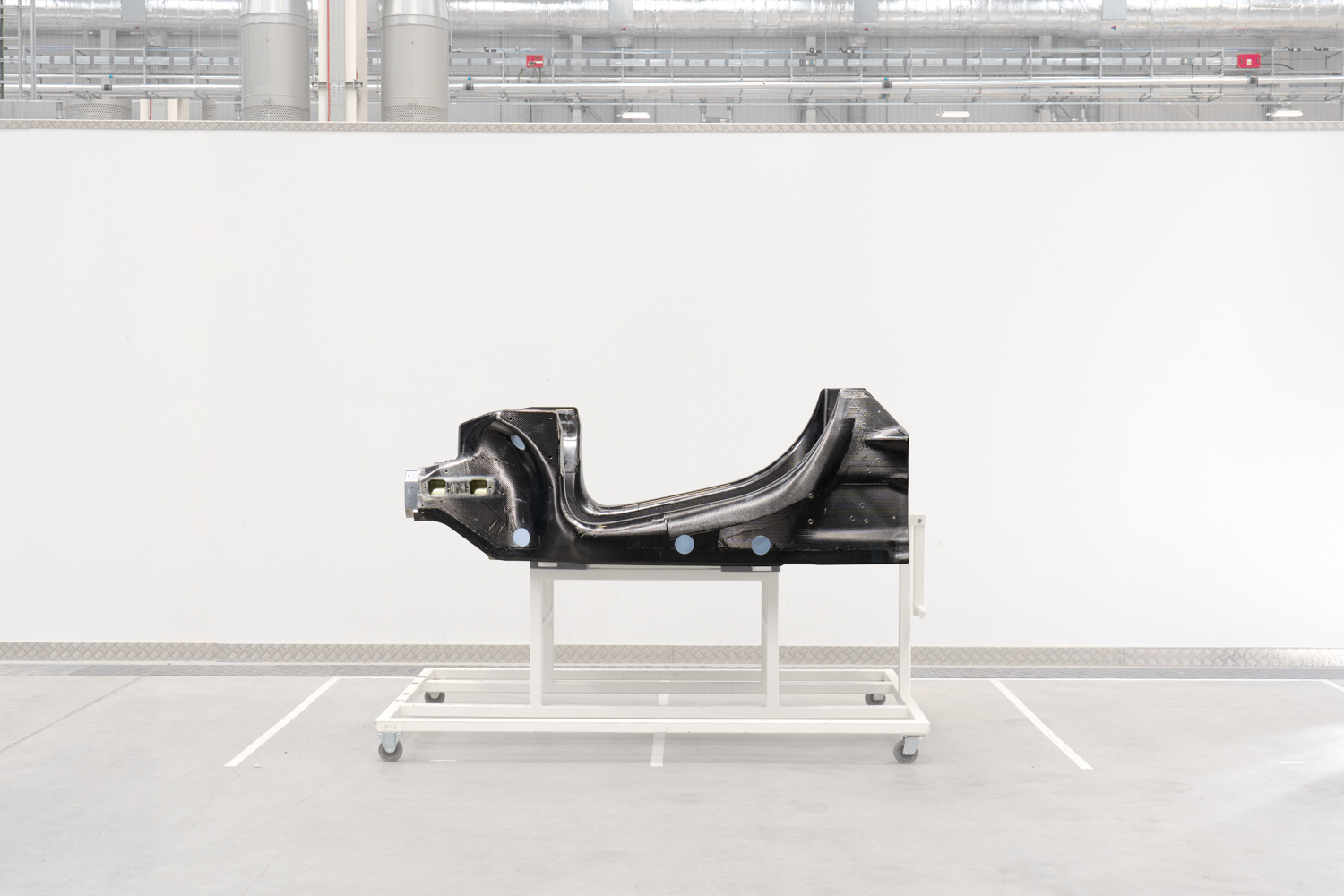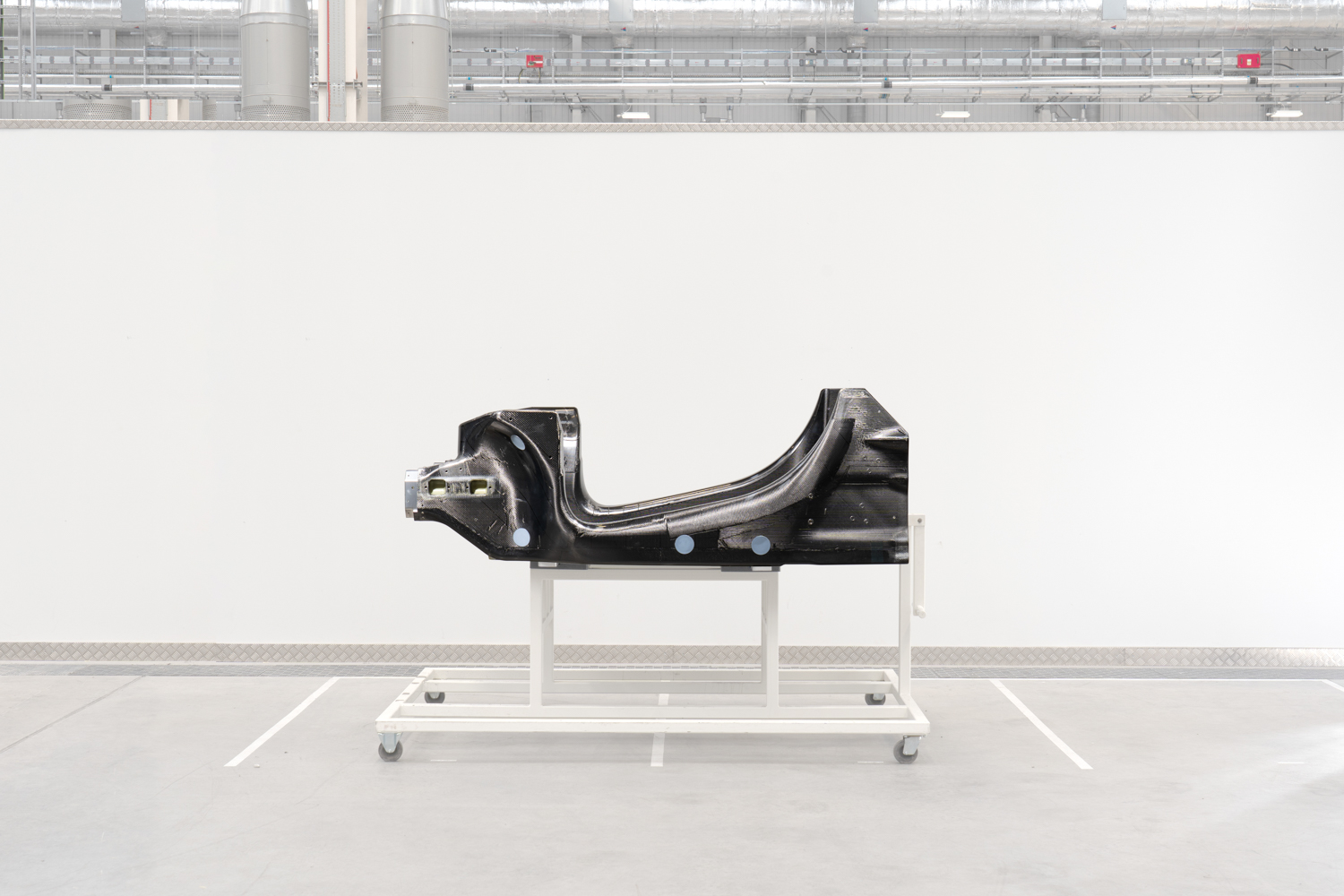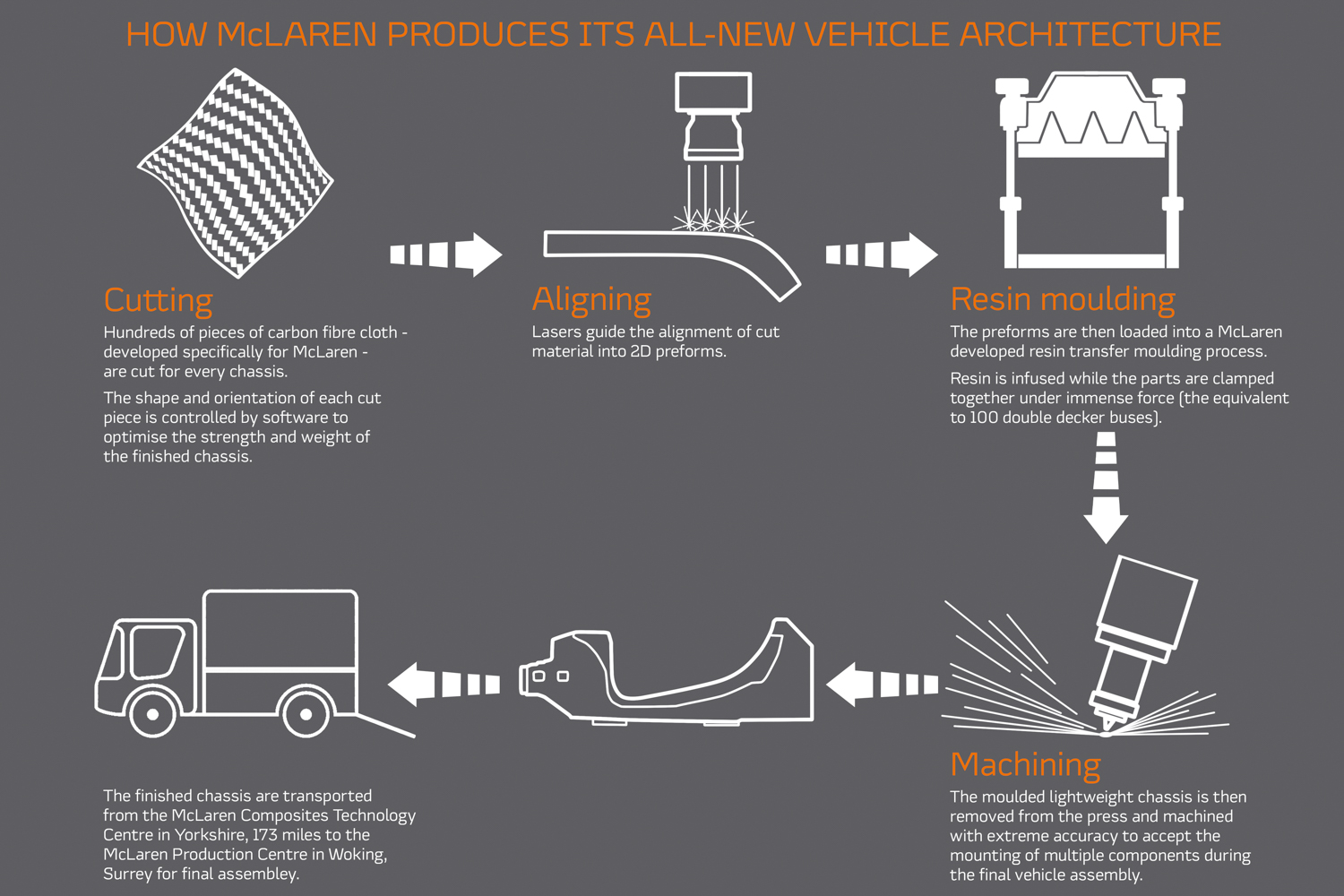The MonoCell carbon-fibre tub has underpinned every McLaren since the 12C but now there's a new architecture coming from the supercar manufacturer - and it will form the basis of a range of electrified vehicles.
Hybrid-specific
Announcing the all-new, flexible and lightweight structure, Mike Flewitt - the CEO of McLaren Automotive - said it had been specifically designed to accommodate hybrid powertrains. Once again made of carbon fibre, the architecture has been entirely engineered, developed and produced at the McLaren Composites Technology Centre (MCTC) €55.5 million facility near Sheffield in the UK. It apparently involves 'world-first processes and techniques' to reduce mass from the frame, which in turn reduces overall vehicle weight, without compromising on safety.
As the MonoCell has evolved into the MonoCell II and MonoCell II-T, it could go under the name MonoCell III but that will be confirmed once it launches as the basis of a new hybrid McLaren supercar due to land in 2021.
Fully electric Maccas to come
Mr Flewitt said: "The new ground-breaking vehicle architecture is every bit as revolutionary as the MonoCell chassis we introduced with the company's first car, the 12C, when we first embarked on making production vehicles a decade ago. This new, ultra-lightweight carbon-fibre chassis boasts greater structural integrity and higher levels of quality than ever before with our new MCTC facility quickly becoming recognised as a global centre of excellence in composite materials science and manufacturing.
"Our advanced expertise in lightweight composites processes and manufacturing, combined with our experience in cutting-edge battery technology and high-performance hybrid propulsion systems, means we are ideally placed to deliver to customers levels of electrified high-performance motoring that until now have simply been unattainable."
Mr Flewitt added that the architecture will allow McLaren to transition to pure electric supercars in the near-future, saying: "For us, light-weighting and electrification go hand-in-hand to achieve better performance as well as more efficient vehicles."



